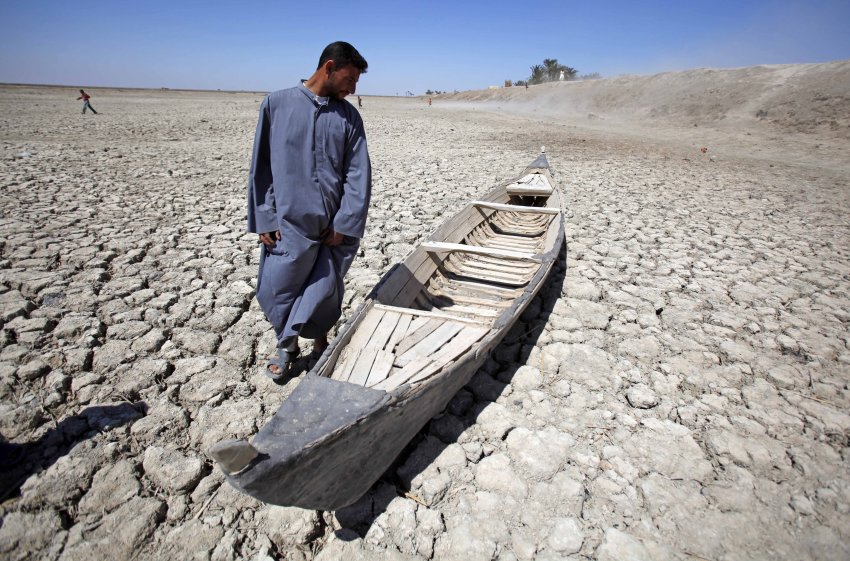
A new climate report released on August 3 by the US National Oceanic and Atmospheric Administration (NOAA) confirms the world is hot and getting hotter.
The State of the Climate report said that last year was the second consecutive hottest year on record, surpassing 2014 as the previous warmest year.
The report is the work of more than 450 scientists from 62 countries. It provides detail on global climate indicators, notable weather events and data collected by environmental monitoring stations and instruments located on land, water, ice and in space.
While some of the warming is due to a strong El Nino event, the report notes that most of the warming reflected trends consistent with a warming planet: land and ocean temperature rises and sea levels and greenhouse gas rises.
The report made some significant findings:
- Greenhouse gases last year were the highest on record. In Hawaii, the annual average atmospheric carbon dioxide concentration was 400.8 parts per million, which surpassed 400 ppm for the first time. Last year's average global CO2 concentration was not far below, 399.4 ppm, an increase of 2.2 ppm compared with 2014.
- Global surface temperatures are the highest on record, aided by a strong El Nino. Across land surfaces, record to near-record warming was reported across every inhabited continent.
- Sea surface temperatures are the highest on record. The highest temperature changes from average were in parts of the north-east Pacific. Global upper ocean heat content is the highest on record because oceans absorb more than 90% of excess heat.
- Global average sea levels are the highest on record and rose to around 70 millimetres higher than the 1993 average. Over the past two decades, sea levels have risen at an average rate of 3.3 mm a year, with the highest rates of increase taking place in the western Pacific and Indian Oceans.
- Extremes were observed in the water cycle and precipitation. Combined with the strong El Niño, an above normal rainy season led to major floods in many parts of the world.
- Of the 16 hottest years ever recorded, 15 have happened this century. As scientists have been warning, the adverse impact of higher and higher concentrations of greenhouse gases in the Earth's atmosphere is leading to extreme and unpredictable weather patterns.
Many extreme heat waves took place last year including in India and Pakistan, the Middle East and across Europe and in North America.
The heat wave currently hitting Iraq was described by a resident of Basra as like “walking into a fire”. “It's like everything on your body — your skin, your eyes, your nose — starts to burn.”
As parts of the world suffer from severe drought — 14% of the land surface, up from 8% in 2014 — in others, such as across the Pacific Basin, people are battling tropical cyclones and significant flooding.
The impact of higher and higher concentrations of greenhouse gases is clear: extreme and unpredictable weather events which are having a devastating impact.
The level of CO2 concentration in the atmosphere has risen to 400 ppm and higher, meaning that the Earth has already reached a dangerous tipping point.
Climate scientist and former head of the US-based Goddard Institute for Space Studies Dr James Hansen warned several decades ago that 350 ppm was a “safe” level of carbon dioxide, and that anything beyond that would put humanity and the planet at risk.
Scientists estimate that the level of CO2 concentration was around 275 ppm at the beginning of human civilisation. Since the industrial revolution of the 18th century and the rise of capitalism the amount of carbon began to rise, at first slowly, and now much more quickly.
Today, 350.org estimates that each year the amount of CO2 being added to the atmosphere is 2 ppm. While environmentalists and scientists disagree on the time needed to make the atmosphere safe again, and indeed if it can be reversed, they do agree that carbon needs to be drawn down — and quickly — if large parts of the globe are going to survive.
The biggest obstacle to acting on the science, however, is rich countries' obsession with profiting from fossil fuels.
The extreme inequality of wealth across the globe mean most ordinary people will not be able to withstand the impact of extreme climate change and have no ability to mitigate it.
Commenting on the impact of the extreme heat, Iraqi economist Bassem Antoine said the country's economy, already devastated by unending war, probably contracts between 10 and 20% during the summer heat. In human terms, hospitals are unable to cope with the number of people suffering from dehydration and heat exhaustion, farmers can do nothing about their wilting crops and those tens of thousands who have been displaced by war die out of sight in tents and other makeshift shelters.
The climate emergency onus on rich countries, like Australia, with a big per capita carbon footprint, is to cut its carbon output now. It is technologically possible.
Canadian ecosocialist Ian Angus said in Sydney in May that climate extremes are not the only records being broken. “The 21st century is being defined by a combination of record-breaking inequality with record-breaking climate change. That combination is already having disastrous impacts on the majority of the world's people.”
But, he added: “Climate change and extreme weather events are not devastating a random selection of human beings from all walks of life. There are no billionaires among the dead, no corporate executives living in shelters, no stockbrokers watching their children die of malnutrition. Overwhelmingly, the victims are poor and disadvantaged.”
There is a compelling moral reason to take action on climate change today, armed with the latest scientific data. For the sake of the bulk of humanity and the planet, we simply cannot afford to allow the 1% to continue with business as usual.